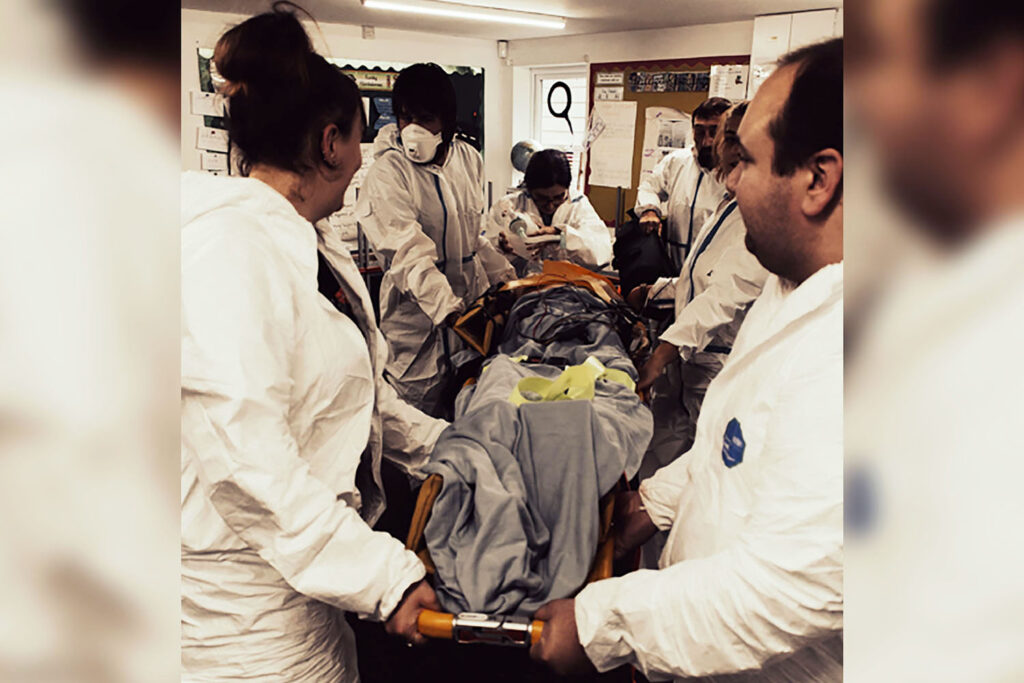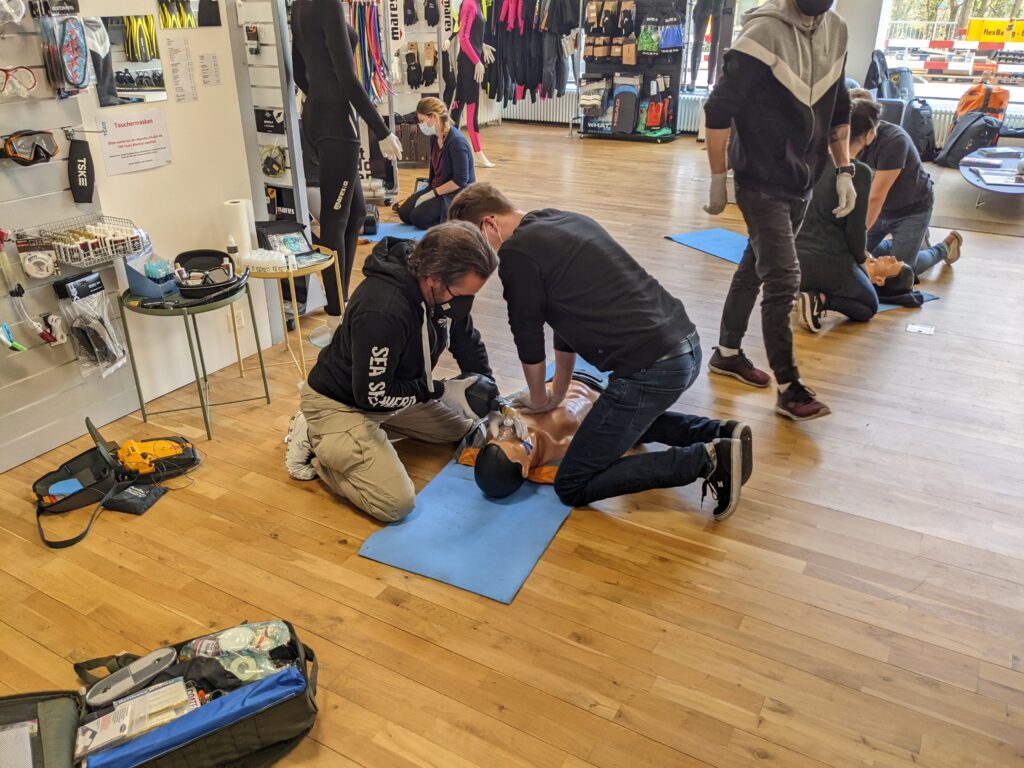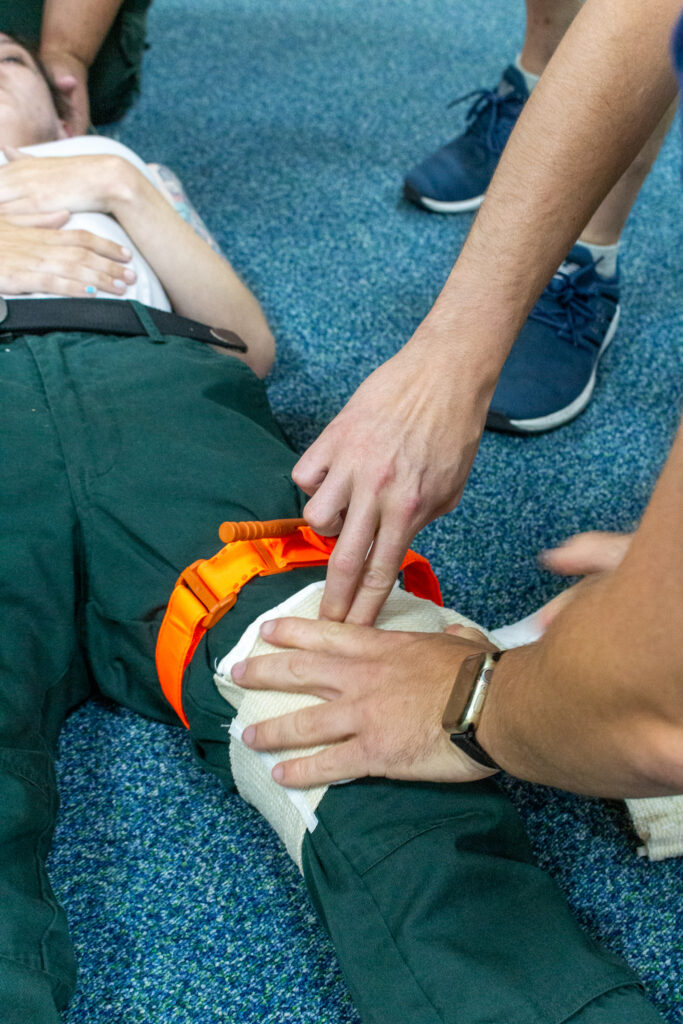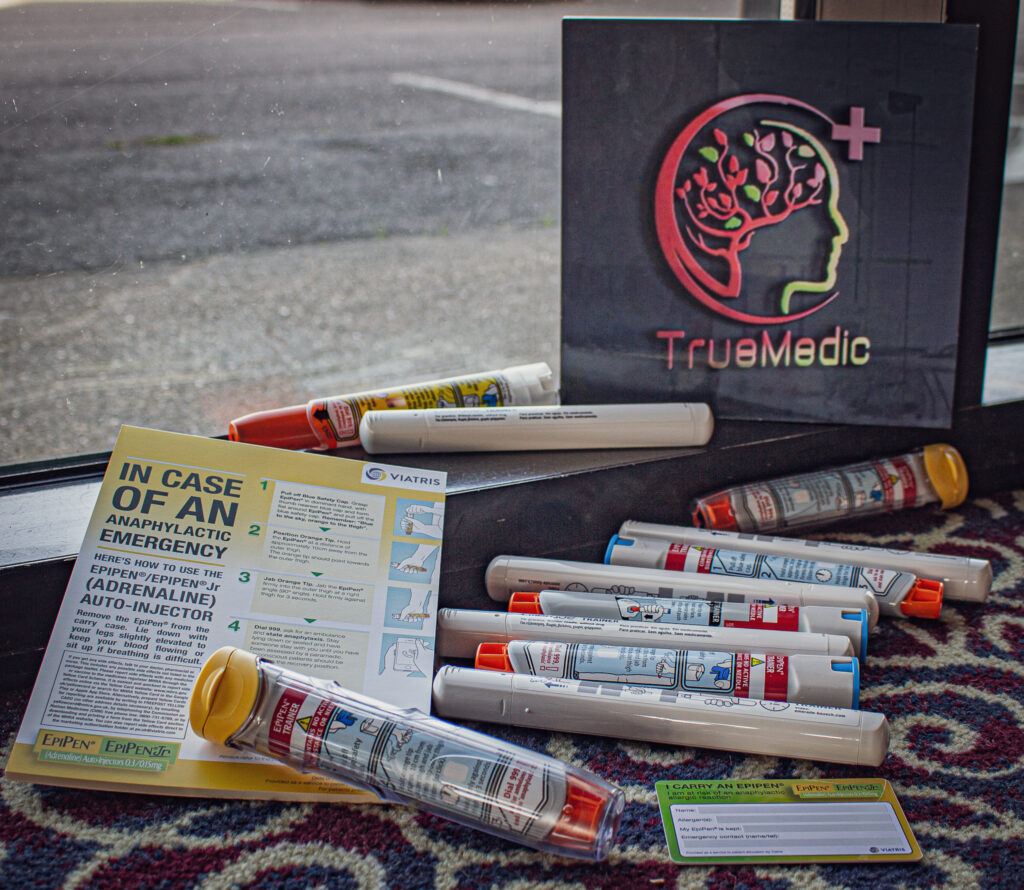We all do manual handling daily, from carrying groceries to moving furniture. However, many people don’t realize that manual handling requires proper guidance. According to the HSE, not knowing the basics of manual handling is the cause of over a third of all workplace injuries.[1] These injuries range from minor strains and sprains to more severe conditions.
So, what exactly is manual handling, and how can we do it safely? This blog post will delve into the basics of manual handling, including the risks and responsibilities of employees and employers. We will also explore techniques for safe manual handling, legal obligations, and the consequences of non-compliance.
Whether you work in a physically demanding job or simply want to avoid injury during everyday tasks, TrueMedic Ltd is here to guide you about the risks and responsibilities of manual handling.
Risks Associated With Manual Handling
Manual handling, which involves lifting, carrying, pushing, or pulling heavy objects, can result in various injuries. Let’s explore the common risks associated with manual handling and the potential consequences of not following proper safety procedures.
-
Musculoskeletal Injuries
The most common injury resulting from manual handling is a musculoskeletal disorder (MSD). MSDs are injuries or disorders of the muscles, tendons, ligaments, nerves, or joints caused by repetitive or prolonged exposure to awkward postures, forceful exertions, or repetitive motions. Common MSDs associated with manual handling include back pain, sprains, and repetitive strain injuries (RSIs). [1]
-
Accidents And Falls
In addition to MSDs, not knowing the basics of manual handling can lead to accidents and falls. This can occur when heavy objects are dropped, workers trip over objects on the floor, or workers lose their balance while carrying a load.
-
Fatigue And Overexertion
Manual handling can be physically demanding and can cause fatigue and overexertion. Workers who are tired or overworked may be more prone to accidents or unable to perform tasks properly, increasing the risk of injury.
-
Psychological Effects
Manual handling can also have psychological effects on workers. Fear of injury or a lack of confidence in one’s ability to perform manual handling tasks can lead to stress and anxiety, affecting overall well-being.
Failure to follow safety procedures during manual handling can lead to severe consequences. TrueMedic Ltd specializes in providing ergonomic solutions and training courses to manage the risks associated with manual handling.
Responsibilities Of Employees And Employers for Safe Manual Handling

The responsibility for safe manual handling is shared between both employers and employees. Let’s have a look at the responsibilities of each: [2]
Responsibilities of Employees
- Follow safe manual handling techniques and procedures provided by the employer.
- Use mechanical aids where possible to reduce the risk of injury.
- Report any hazards or concerns to the employer.
- Attend training and refresher courses on manual handling techniques.
- Take care of their health and safety, including their physical capabilities and limitations.
Responsibilities of Employers
- Provide employees with adequate training on manual handling techniques.
- Ensure the workplace is set up correctly, with objects at a comfortable height and distance.
- Provide mechanical aids where necessary to reduce the risk of injury.
- Conduct regular risk assessments to identify potential hazards and implement appropriate measures to reduce the risk of injury.
- Encourage employees to report hazards or concerns and take appropriate action to address them.
- Maintain a safe working environment and ensure that equipment and tools are correctly maintained and in good working order.
Techniques For Safe Manual Handling

Manual handling can be hazardous if not done correctly, leading to various injuries and long-term health problems. Here are some techniques for safe manual handling to reduce the risk of injury and ensure workplace safety: [3]
-
Plan Ahead
Before lifting or moving any objects, it is essential to plan. This involves assessing the weight and size of the object, the distance it needs to be moved, and the available space. You should also consider whether you need assistance, such as a lifting aid or additional workers.
-
Use Proper Lifting Techniques
Using proper lifting techniques is essential to reduce the risk of injury. This includes keeping the back straight, bending the knees, and lifting with the legs rather than the back. You should also avoid twisting or bending at the waist when carrying heavy objects.
-
Use Mechanical Aids
Mechanical aids, such as a trolley or a forklift, can significantly reduce the risk of injury when moving heavy objects. These aids support the object’s weight and make moving easier without putting excessive strain on the body.
-
Take Breaks And Vary Tasks
Manual handling can be physically demanding, and taking breaks and various tasks is essential to prevent fatigue and overexertion. You should also avoid repetitive lifting and carrying tasks, which can increase the risk of RSIs.
-
Maintain Good Posture
Maintaining good posture is essential to reduce the risk of MSDs. This involves standing up straight, keeping the shoulders back, and avoiding slouching or leaning forward. You should also ensure the work area is set up correctly, with objects at a comfortable height and distance.
How TrueMedic Ltd Can Help Your Team with Safe Manual Handling

Manual handling of goods and materials is essential in many industries. Manual tasks are physically demanding and can involve repetitive movements or awkward postures that can cause injury if done incorrectly.
That’s why it’s so essential to understand manual handling risks and responsibilities and the measures necessary for safe and effective manual handling operations.
TrueMedic Ltd can provide you with the expertise to ensure your team is adequately trained in manual handling and that all appropriate equipment is fit for purpose.
Our manual handling courses cover everything from risk assessment to manual lifting techniques ensuring your employees are safe and aware of the risks associated with manual handling. Our team can also provide ongoing guidance and advice on how best to use any equipment provided in the workplace.
Everyone should be safe while carrying out manual tasks. We also understand that different environments and roles may require different approaches to manual handling techniques.
That’s why our team is dedicated to customizing the training programs to fit your specific requirements. We will work with you and your team to ensure that all relevant risk assessments and any necessary safety measures are implemented.
Read our blog on Level 2 Award – Moving And Handling Loads At Work for more information.
Conclusion
By understanding the risks associated with manual handling and adopting safe handling techniques, employees and employers can significantly reduce the risk of injury and promote workplace safety.
TrueMedic Ltd offers a range of innovative ergonomic solutions to promote good posture and reduce strain on the body, as well as expert advice and training on manual handling techniques. By working with TrueMedic Ltd, employers can improve workplace safety, reduce the risk of injury, and improve their employees’ overall health and well-being. Contact us to learn more.
FAQs
1. What are the risks of manual handling?
More than 33% of workplace injuries are caused by manual handling, which can result in work-related musculoskeletal disorders (MSDs) like pain, injuries to arms, legs, and joints, as well as different types of repetitive strain injuries.
2. What are the basics of manual handling?
When bending down, keep your back straight and avoid leaning to the side. Keep your shoulders aligned with your hips and facing the same direction. Turning by moving your feet rather than twisting your back while lifting is better. Also, remember to keep your head up when handling.
3. What is the responsibility of manual handling?
Employers are responsible for ensuring that their workers are not at risk of getting injured due to hazardous manual handling activities at the workplace. Manual handling involves carrying, lifting, pushing, pulling, or moving loads using physical force or hand.
4. How can you reduce the risk of manual handling injuries?
Whenever you encounter a heavy load, it’s better to use mechanical aids or ask for assistance to lift or carry it. Also, organise your work area to reduce the need for bending, twisting, and stretching. Take regular breaks to avoid strain, and after heavy work, cool down your body with gentle, prolonged stretches.
References:
https://www.highspeedtraining.co.uk/hub/manual-handling-techniques/






